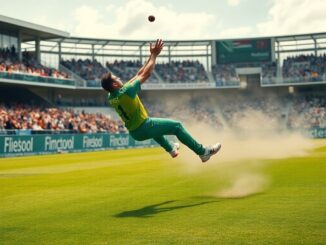In a dramatic escalation of conflict, Ukraine's special forces have reportedly struck an airfield well within Russian territory, claiming to have damaged two...

Topics covered
- Details of the strike
- Prisoner exchanges and ongoing negotiations
- Details of the strike
- Prisoner exchanges and ongoing negotiations
- Russia’s naval ambitions
- Emerging threats and global responses
- With both sides ramping up their military postures, questions loom about the endgame of this conflict. Will diplomatic channels open up, or is this just the beginning of a broader confrontation? The stakes have never been higher, and the answers remain shrouded in uncertainty.
In a dramatic escalation of conflict, Ukraine’s special forces have reportedly struck an airfield well within Russian territory, claiming to have damaged two fighter jets stationed there. This bold move comes just days after the launch of Operation Spiderweb, a significant military initiative aimed at disrupting Russian capabilities deep behind enemy lines.
Details of the strike
Located 400 miles from the Ukrainian border, the Savasleyka airfield has become the focal point of this latest offensive. While Kyiv has remained tight-lipped regarding the specifics of the attack, Russian war bloggers have disputed claims of damage, insisting that the warplanes remain intact.
This assertion, however, does little to assuage the growing concern among Russian military ranks following last month’s drone assaults that crippled significant portions of their bomber fleet.
As Ukraine continues its operations, the atmosphere grows increasingly tense. Ukrainian President Volodymyr Zelensky announced the return of another group of prisoners from Russian custody, a move that underscores the ongoing negotiations for the release of captured soldiers.
“We are doing everything possible to bring back every single person,” Zelensky stated, highlighting the urgency and emotional weight behind these exchanges.
Retaliatory attacks by Russia
In a retaliatory show of force, Russia unleashed its most extensive drone assault on Ukraine yet, targeting multiple cities including Kyiv and Odesa. Reports indicate that 479 drones and 20 missiles were deployed, resulting in significant destruction and loss of life. A maternity ward in Odesa was struck, intensifying fears for civilian safety amid this escalating warfare.
Local officials have reported that the attacks have left at least one dead and several injured, with the city of Kyiv enduring air raid alerts that spanned several hours. “A difficult night for all of us,” remarked Timur Tkachenko, head of Kyiv’s military district, as explosions rocked the city and fires broke out across various neighborhoods. The chaos left many residents shaken, with the night sky illuminated by the aftermath of relentless drone strikes.
International implications
Amid this turmoil, NATO Secretary-General Mark Rutte has made headlines with remarks suggesting that the UK must ramp up defense spending or face dire consequences. He provocatively stated that failure to do so might require British citizens to “learn to speak Russian,” a stark reminder of the security challenges facing Europe. This statement reflects a growing concern over Russia’s military capabilities, particularly as they are reportedly advancing their production of weapons at an alarming rate.
Rutte’s comments come as NATO seeks to bolster its defenses in light of the evolving threat landscape. “We are all on the eastern flank now,” he emphasized, signaling a unified stance against the Russian threat. The urgency of the situation is compounded by the rapid development of new Russian missile technologies, which pose a significant risk to European capitals.
Prisoner exchanges and ongoing negotiations
In a rare glimpse of diplomatic progress, Zelensky celebrated the return of Ukrainian prisoners, including the wounded and those under 25 years of age. This ongoing exchange is complex and fraught with sensitive negotiations, highlighting the human cost of this protracted conflict. “Today, an exchange began, which will continue in several stages over the coming days,” he confirmed, reinforcing his commitment to bringing every soldier home.
However, as Ukraine advances its summer offensive, the resilience of its armed forces remains under scrutiny. With Western support and innovative drone strategies, Ukraine’s military experts believe they can withstand the Russian onslaught. Yet, the stakes are high, and the conflict’s toll on both sides continues to mount.
In a related vein, Russian President Vladimir Putin has approved a new naval strategy aimed at restoring Russia’s maritime power. Kremlin aide Nikolai Patrushev outlined plans to enhance naval capabilities, a move that signals an aggressive posture in the face of Western military alliances. “Russia’s position as one of the world’s greatest maritime powers is gradually recovering,” Patrushev stated, insisting that such developments are essential for national security.
As the conflict rages on, the balance of power in Europe teeters precariously. With Russian forces reconstituting and the West grappling with its own internal challenges, the future remains uncertain. Will Ukraine’s bold strikes deter further aggression, or will they provoke even more severe reprisals from Russia? The unfolding situation demands close attention as the world watches closely.
Emerging threats and global responses
As geopolitical tensions escalate, experts warn that the current trajectory could lead to significant shifts in global alliances and military strategies. Britain’s strategic defense review paints a grim picture, with analysts suggesting that reliance on the U.S. may no longer be viable. Dr. Fiona Hill, a former White House advisor, expressed concern that the UK finds itself in a precarious position, caught between Russian aggression and an increasingly unpredictable American foreign policy.
In this fraught environment, every action taken carries weight. Ukrainian drone strikes deep within Russian territory symbolize not just military strategy but the broader struggle for national identity and sovereignty. As the conflict continues to unfold, the world holds its breath, waiting to see how these developments will shape the future of Europe and beyond.
With both sides ramping up their military postures, questions loom about the endgame of this conflict. Will diplomatic channels open up, or is this just the beginning of a broader confrontation? The stakes have never been higher, and the answers remain shrouded in uncertainty.
{
“selected_category”: {
“id”: “1”,
“reason”: “The content primarily deals with news related to military actions and international relations.”
},
“title_h1”: “Ukraine strikes deep into Russian territory amid escalating conflict”,
“title_alternative”: “Ukraine’s audacious military strikes raise tensions with Russia”,
“subtitle”: “Ukrainian special forces claim significant airfield attack as Russia responds with drone assaults.”,
“meta_title”: “Ukraine strikes Russian airfield – latest updates”,
“meta_description”: “Ukraine’s military claims to have hit a Russian airfield, escalating tensions amid ongoing prisoner exchanges.”,
“resume”: “Ukraine’s military strikes deep into Russia, raising stakes in ongoing conflict as tensions escalate.”,
“content”: ”
In a dramatic escalation of conflict, Ukraine’s special forces have reportedly struck an airfield well within Russian territory, claiming to have damaged two fighter jets stationed there. This bold move comes just days after the launch of Operation Spiderweb, a significant military initiative aimed at disrupting Russian capabilities deep behind enemy lines.
Details of the strike
Located 400 miles from the Ukrainian border, the Savasleyka airfield has become the focal point of this latest offensive. While Kyiv has remained tight-lipped regarding the specifics of the attack, Russian war bloggers have disputed claims of damage, insisting that the warplanes remain intact. This assertion, however, does little to assuage the growing concern among Russian military ranks following last month’s drone assaults that crippled significant portions of their bomber fleet.
As Ukraine continues its operations, the atmosphere grows increasingly tense. Ukrainian President Volodymyr Zelensky announced the return of another group of prisoners from Russian custody, a move that underscores the ongoing negotiations for the release of captured soldiers. “We are doing everything possible to bring back every single person,” Zelensky stated, highlighting the urgency and emotional weight behind these exchanges.
Retaliatory attacks by Russia
In a retaliatory show of force, Russia unleashed its most extensive drone assault on Ukraine yet, targeting multiple cities including Kyiv and Odesa. Reports indicate that 479 drones and 20 missiles were deployed, resulting in significant destruction and loss of life. A maternity ward in Odesa was struck, intensifying fears for civilian safety amid this escalating warfare.
Local officials have reported that the attacks have left at least one dead and several injured, with the city of Kyiv enduring air raid alerts that spanned several hours. “A difficult night for all of us,” remarked Timur Tkachenko, head of Kyiv’s military district, as explosions rocked the city and fires broke out across various neighborhoods. The chaos left many residents shaken, with the night sky illuminated by the aftermath of relentless drone strikes.
International implications
Amid this turmoil, NATO Secretary-General Mark Rutte has made headlines with remarks suggesting that the UK must ramp up defense spending or face dire consequences. He provocatively stated that failure to do so might require British citizens to “learn to speak Russian,” a stark reminder of the security challenges facing Europe. This statement reflects a growing concern over Russia’s military capabilities, particularly as they are reportedly advancing their production of weapons at an alarming rate.
Rutte’s comments come as NATO seeks to bolster its defenses in light of the evolving threat landscape. “We are all on the eastern flank now,” he emphasized, signaling a unified stance against the Russian threat. The urgency of the situation is compounded by the rapid development of new Russian missile technologies, which pose a significant risk to European capitals.
Prisoner exchanges and ongoing negotiations
In a rare glimpse of diplomatic progress, Zelensky celebrated the return of Ukrainian prisoners, including the wounded and those under 25 years of age. This ongoing exchange is complex and fraught with sensitive negotiations, highlighting the human cost of this protracted conflict. “Today, an exchange began, which will continue in several stages over the coming days,” he confirmed, reinforcing his commitment to bringing every soldier home.
However, as Ukraine advances its summer offensive, the resilience of its armed forces remains under scrutiny. With Western support and innovative drone strategies, Ukraine’s military experts believe they can withstand the Russian onslaught. Yet, the stakes are high, and the conflict’s toll on both sides continues to mount.
In a related vein, Russian President Vladimir Putin has approved a new naval strategy aimed at restoring Russia’s maritime power. Kremlin aide Nikolai Patrushev outlined plans to enhance naval capabilities, a move that signals an aggressive posture in the face of Western military alliances. “Russia’s position as one of the world’s greatest maritime powers is gradually recovering,” Patrushev stated, insisting that such developments are essential for national security.
As the conflict rages on, the balance of power in Europe teeters precariously. With Russian forces reconstituting and the West grappling with its own internal challenges, the future remains uncertain. Will Ukraine’s bold strikes deter further aggression, or will they provoke even more severe reprisals from Russia? The unfolding situation demands close attention as the world watches closely.
Emerging threats and global responses
As geopolitical tensions escalate, experts warn that the current trajectory could lead to significant shifts in global alliances and military strategies. Britain’s strategic defense review paints a grim picture, with analysts suggesting that reliance on the U.S. may no longer be viable. Dr. Fiona Hill, a former White House advisor, expressed concern that the UK finds itself in a precarious position, caught between Russian aggression and an increasingly unpredictable American foreign policy.
In this fraught environment, every action taken carries weight. Ukrainian drone strikes deep within Russian territory symbolize not just military strategy but the broader struggle for national identity and sovereignty. As the conflict continues to unfold, the world holds its breath, waiting to see how these developments will shape the future of Europe and beyond.
With both sides ramping up their military postures, questions loom about the endgame of this conflict. Will diplomatic channels open up, or is this just the beginning of a broader confrontation? The stakes have never been higher, and the answers remain shrouded in uncertainty.
“,
“focus_keywords”: “Ukraine, Russia, military strikes, NATO, drone warfare”
}




